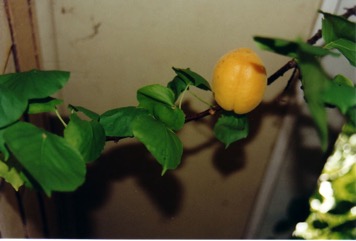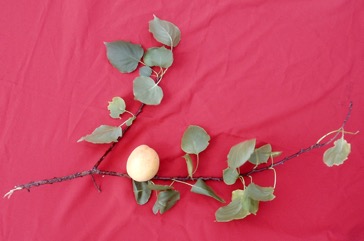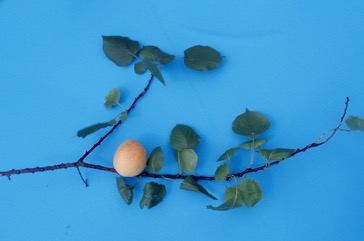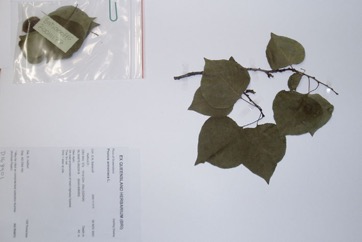Apricot

It is a temperate plant. It is native to C. Asia and N. China. It grows in cool areas with hot dry summers. They do best on a free draining soil. In Nepal plants grow between 2500-3500 m altitude. It does well in areas with 100 cm rainfall, cool winters with 300-900 chilling hours below 7°C and frost free spring. A pH of 6-6.8 is suitable. It needs good sunlight. It suits hardiness zones 5-10.
Also known as:
Aberikos, Abrico, Abricotier, Abrikos, Albericoque, Albicocca, Aprikhot, Aprikosenbaum, Apurikotto, Chabacano, Chinese almond, Chudri, Chuli, Damasco, Epulokoti, Hari, Hung ngan, Kham-bu, Khubani, Khumani, Khurpani, Kushmiaru, Malhei, Swari, Xing, Yexing, Zardalu, Zerdali, Zurdalu
Synonyms
- Amygdalus armeniaca (L.) Dumort.
- Armeniaca vulgaris Lam.
- Prunus armeniaca var. vulgaris Zabel
Edible Portion
- Fruit, Kernels, Seeds - oil, Nuts -caution, Flowers
Where does Apricot grow?
Found in: Afghanistan, Africa, Arabia, Argentina, Armenia, Asia, Australia, Azerbaijan, Brazil, Britain, Bulgaria, Canada, Caucasus, Central Asia, Chile, China, East Africa, Egypt, Europe, France, Georgia, Greece, Himalayas, Hungary, India, Indochina, Indonesia, Iran, Iraq, Italy, Japan, Korea, Kazakhstan, Kurdistan, Kyrgyzstan, Lithuania, Macedonia, Malawi, Malaysia, Mediterranean, Mexico, Moldova, Mongolia, Morocco, Myanmar, Nepal, North Africa, North America, Northeastern India, NW India, Pakistan, Romania, Russia, SE Asia, Serbia, Siberia, South Africa, Southern Africa, South America, Spain, Switzerland, Syria, Tajikistan, Thailand, Turkestan, Turkey, Turkmenistan, Tasmania, United States, Uzbekistan, Vietnam, Zimbabwe
Notes: There are about 200 Prunus species.
Status: It is a cultivated fruit tree. It is sold in local and global markets.
Growing Apricot
Cultivation: Plants are grown from seed. The flowers are self fertile. Plants require some winter chilling.
Edible Uses: The ripe fruit are eaten. The kernels can be eaten. If sweet they are eaten fresh and if bitter they are roasted. They should be used with caution. The seed oil is used for cooking. The fruit are also used for juice and are dried and eaten dry. They are also used for jam, and in pastries, pies, cakes, and picked.
Production: Trees fruit is 3-4 years. Fruit are picked by hand.
Nutrition Info
per 100g edible portion| Edible Part | Energy (kcal) | Protein (g) | Iron (mg) | Vitamin A (ug) | Vitamin c (mg) | Zinc (mg) | % Water |
|---|---|---|---|---|---|---|---|
| Fruit raw | 28 | 0.6 | 0.4 | 1500 | 7 | 0.1 | 86.6 |
| Fruit boiled | 22 | 0.4 | 0.3 | 1180 | 5 | 0.1 | 82.6 |
Apricot Photos




References
Ambasta, S.P. (Ed.), 2000, The Useful Plants of India. CSIR India. p 494
Arora, R. K., 2014, Diversity in Underutilized Plant Species - An Asia-Pacific Perspective. Bioversity International. p 82
Awan, M. R., et al, 2011, Studies on traditional knowledge of economically important plants of Kaghan Valley, Mansehra District, Pakistan. Journal of Medicinal Plants Research Vol. 5(16), pp. 3958-3967
Ballabh, B., et al, 2007, Raw edible plants of cold desert Ladakh. Indian Journal of Traditional Knowledge. 6(1) pp 182-184
Battacharyya, A., 1991, Ethnobotanical Observations in the Ladakh Region of Northern Jammu and Kashmir State, India. Economic Botany, Vol. 45, No. 3, pp. 305-308
Blamey, M and Grey-Wilson, C., 2005, Wild flowers of the Mediterranean. A & C Black London. p 77
Bodkin, F., 1991, Encyclopedia Botanica. Cornstalk publishing, p 840
Bremness, L., 1994, Herbs. Collins Eyewitness Handbooks. Harper Collins. p 76
Bussman, R. W., et al, 2016, A comparative ethnobotany of Khevsureti, Samtskhe-Javakheti, Tusheti, Svaneti, and Racha-Lechkhumi, Republic of Georgia (Sakartvelo), Caucasus. Journal of Ethnobiology and Ethnomedicine (2016) 12:4 (As Armeniaca vulgaris)
Bussman, R. W. et al, 2017, Ethnobotany of Samtskhe-Javakheti, Sakartvelo (Republic of Georgia), Caucasus. Indian Journal of Traditional Knowledge Vol. 16(1) pp 7-24 (Also as Armeniaca vulgaris)
Coombes, A.J., 2000, Trees. Dorling Kindersley Handbooks. p 258
Cruz, I. M., et al, 2015, Edible fruits and seeds in the State of Mexico. Revista Mexicana de Ciencias Agricolas. Vol. 6. Num. 2 pp 331-346
Cundall, P., (ed.), 2004, Gardening Australia: flora: the gardener's bible. ABC Books. p 1092
DARLINGTON & AMMAL,
Dashorst, G.R.M., and Jessop, J.P., 1998, Plants of the Adelaide Plains & Hills. Botanic Gardens of Adelaide and State Herbarium. p 74
Dobriyal, M. J. R. & Dobriyal, R., 2014, Non Wood Forest Produce an Option for Ethnic Food and Nutritional Security in India. Int. J. of Usuf. Mngt. 15(1):17-37
Dorjey, K., et al, 2012, Ethnobotanical observations in Trans-Himalayan Region of Ladakh. Journal of Plant Development Sciences Vol. 4 (4): 459-464.
Dzhangaliev, A. D., et al, 2003, The Wild Fruit and Nut Plants of Kazakhstan, Horticultural Reviews, Vol. 29. pp 305-371
Eastwood, A., et al, 2009. The Red List of Trees of Central Asia. Fauna & Flora International. (As Armeniaca vulgaris)
Facciola, S., 1998, Cornucopia 2: a Source Book of Edible Plants. Kampong Publications, p 194 (As Armeniaca vulgaris)
Flowerdew, B., 2000, Complete Fruit Book. Kyle Cathie Ltd., London. p 40
Hu, Shiu-ying, 2005, Food Plants of China. The Chinese University Press. p 441
Glowinski, L., 1999, The Complete Book of Fruit Growing in Australia. Lothian. p 74
GUPTA,
Hedrick, U.P., 1919, (Ed.), Sturtevant's edible plants of the world. p 519
Hibbert, M., 2002, The Aussie Plant Finder 2002, Florilegium. p 240
INFOODS:FAO/INFOODS Databases
Jabeen, A., et al, 2009, Indigenous uses of economically important flora of Margallah Hills National Park, Islamabad, Pakistan. African Journal of Biotechnology Vol. 8 (5), pp. 763-784
Jackes, D. A., 2007, Edible Forest Gardens
Jardin, C., 1970, List of Foods Used In Africa, FAO Nutrition Information Document Series No 2.p 156
John, L., & Stevenson, V., 1979, The Complete Book of Fruit. Angus & Robertson p 57
Kang, Y., et al, 2012, Wild food plants and wild edible fungi in two valleys on the Qinling Mountains (Shaanxi, central China) Journal of Ethnobiology and Ethnomedicine; 9:26
Karki, S., et al, 2017, Minor Fruits in Nepal: Utilization and Conservation Efforts. Proceedings of 2nd National Workshop on CUAPGR, 2017.
Khan, D. & Shaukat, S.S., 2006, The Fruits of Pakistan: Diversity, Distribution, Trends of Production and Use. Int. J. Biol. Biotech., 3(3):463-499
Khan, W., et al, Ethnomedicinal plants of Kakul Hills, District Abbottabad, KPK, Pakistan.
Lazarides, M. & Hince, B., 1993, Handbook of Economic Plants of Australia, CSIRO. p 199
Liu, Yi-tao, & Long, Chun-Lin, 2002, Studies on Edible Flowers Consumed by Ethnic Groups in Yunnan. Acta Botanica Yunnanica. 24(1):41-56
Lord, E.E., & Willis, J.H., 1999, Shrubs and Trees for Australian gardens. Lothian. p 66
Lorenzi, H., Bacher, L., Lacerda, M. & Sartori, S., 2006, Brazilian Fruits & Cultivated Exotics. Sao Paulo, Instituto Plantarum de Estuados da Flora Ltda. p 496
Macmillan, H.F. (Revised Barlow, H.S., et al) 1991, Tropical Planting and Gardening. Sixth edition. Malayan Nature Society. Kuala Lumpur. p 317
Manandhar, N.P., 2002, Plants and People of Nepal. Timber Press. Portland, Oregon. p 382
Menninger, E.A., 1977, Edible Nuts of the World. Horticultural Books. Florida p 58
Moerman, D. F., 2010, Native American Ethnobotany. Timber Press. p 440
Morley, B. & Everard, B., 1970, Wild Flowers of the World. Ebury press. Plate 45
Mukemre, M., et al, 2016, Survey of wild food plants for human consumption in villages of Catak, (Van-Turkey), Indian Journal of Traditional Knowledge. Vol. 15(2) pp. 183-191
Negi, P. S. & Subramani, S. P., 2015, Wild Edible Plant Genetic Resources for Sustainable Food Security and Livelihood of Kinnaur District, Himachal Pradesh, India, International Journal of Conservation Science. 6 (4): 657-668
Pham-Hoang Ho, 1999, An Illustrated Flora of Vietnam. Nha Xuat Ban Tre. p 805
Plants for a Future database, The Field, Penpol, Lostwithiel, Cornwall, PL22 0NG, UK. http://www.scs.leeds.ac.uk/pfaf/
Polunin, O., & Stainton, A., 2006, Flowers of the Himalaya, Oxford India Paperbacks. p 114
Postman, J. D., et al, 2012, Recent NPGS Coordinated Expeditions in the Trans-Caucasus Region to Collect Wild Relatives of Temperate Fruit and Nut Crops. In Acta Horticulturae Number 948 p 191-198
PROSEA No. 2
Rana, D., et al, 2019, Ethnobotanical knowledge among the semi-pastoral Gujjar tribe in the high altitude (Adhwari’s) of Churah subdivision, district Chamba, Western Himalaya. Journal of Ethnobiology and Ethnomedicine (2019) 15:10
Rana, J.C. et al, 2011, Genetic resources of wild edible plants and their uses among tribal communities of cold arid regions of India. Genetic Resources and Crop Evolution. 59:135-149
Rashid, A., Anand, V.K. & Serwar, J., 2008, Less Known Wild Plants Used by the Gujjar Tribe of District Rajouri, Jammu and Kashmir State. International Journal of Botany 4(2):219-244
Ruiters-Welcome, A. K., 2019, Food plants of southern Africa. Ph.D. thesis. Univ. of Johannesburg p 94
Segura, S., et al, 2018, The edible fruit species in Mexico. Genet Resour Crop Evol (2018) 65:1767–1793
Sharma, B.B., 2005, Growing fruits and vegetables. Publications Division. Ministry of Information and broadcasting. India. p 16
Small, E., 2009, Top 100 Food Plants. The world's most important culinary crops. NRC Research Press. p 88
Solomon, C., 2001, Encyclopedia of Asian Food. New Holland. p 94
Sp. pl. 1:474. 1753
Tardio, J., et al, Ethnobotanical review of wild edible plants in Spain. Botanical J. Linnean Soc. 152 (2006), 27-71
Thakur, D., et al, 2017, Why they eat, what they eat: patterns of wild edible plants consumption in a tribal area of Western Himalaya. Journal of Ethnobiology and Ethnomedicine (2017) 13:70
Upreti, K., et al, 2010, Diversity and Distribution of Wild Edible Fruit Plants of Uttarakhand. Bioversity Potentials of the Himalaya. p 180
Valder, P., 1999, The Garden Plants of China. Florilegium. p 102
van Wyk, B., 2005, Food Plants of the World. An illustrated guide. Timber press. p 305
Vlkova, M., et al, 2015, Edible Plants Sold on Marginal Rural Markets in Fergana Valley, Southern Kyrgyzstan. Bulgarian Journal of Agricultural Science, 21 (No 2) 2015, 243–250
Wang, J. et al, 2013, A Study on the Utilization of Wild Plants for Food in Liangshan Yi Autonomous Prefecture. Plant Diversity and Resources. 35(4): 416-471
Watkins, R., 1979, Cherry, plum, peach, apricot and almond, in Simmonds, N.W., (ed), Crop Plant Evolution. Longmans. London. p 242
Wickens, G.E., 1995, Edible Nuts. FAO Non-wood forest products. FAO, Rome. p147
Williamson, J., 2005, Useful Plants of Malawi. 3rd. Edition. Mdadzi Book Trust. p 208
World Checklist of Useful Plant Species 2020. Royal Botanic Gardens, Kew